Choose the most appropriate single answer.
1.
If a laboratory 's control range (using a 99.7 confidence
interval) for a given assay is 20.0 to 50.0, what would its means and one
standard deviation be:
a.
Mean
= 35.0 SD = 15.0
b.
Mean
= 35.0 SD = 10.0
c.
Mean
= 40.0 SD = 7.5
d.
Mean
= 35.0 SD = 5.0
2.
If a potential donor has
been transfused blood products, he must be deferred from blood donation for:
a.
1
month
b.
3
months
c.
6
months
d.
1
year
3.
An urticarial reaction is
characterized by:
a.
Rapid
rise in temperature
b.
Difficulty
breathing
c.
Rash
and hives
d.
Blood
in the urine
4.
Which of the following cells when found upon microscopic
examination of the urine would be most indicative of kidney disease:
a.
WBCs
and bacteria
b.
Tubular
epithelial cells
c.
Squamous
epithelial cells
d.
RBCs
5.
Which of the following statistical methods would be employed to
determine how closely two different methods compare with each other:
a.
Linear
regression
b.
Standard
deviation
c.
Coefficient
of variation
d.
Percent
difference of means
6.
Elevation in CSF total protein may be seen in all of the
following conditions except:
a.
Brain
tumors
b.
Bacterial
meningitis
c.
Parkinson's
disease
d.
CVA
7.
Which one of the following is not a system for incubation of
anaerobic bacteria:
a.
Candle
jar
b.
Glove
box anaerobic chamber
c.
Anaerobic
jar - gaspak
d.
Anaerobic
jar – evacuation replacement
8.
A plastic anemia may be caused by all of the following except:
a.
Infections
b.
Chemical
agent
c.
Enzyme
deficiencies
d.
Ionizing
radiation
9.
Which of the following types of whole blood would be the least
satisfactory to transfuse to a type AB patient:
a.
Group
O
b.
Group
A
c.
Group
B
d.
Group
AB
10.
Bence-Jones proteinuria
is associated with all of the following conditions except:
a.
Macroglobulinemia
b.
Pernicious
anemia
c.
Multiple
myeloma
d.
Amyloidosis
11.
The slide coagulase test is a rapid method for identifying which
of the following organisms.
a.
Staphylococcus
hominis
b.
Staphylococcus
pneumoniae
c.
Staphylococcus
aureus
d.
Neisseria
gonorrhoeae
12.
Which of the following streptococcus exhibits a positive bile
solubility test:
a.
S.
pyogenes
b.
S.
pneumoniae
c.
S.
agalactiae
d.
S.
mutans
13.
Which of the following red blood cells contain the most H
antigen:
a.
Group
A cells
b.
Group
B cells
c.
Group
O cells
d.
Bombay
phenotype
14.
A zinc deficiency in the elderly is often caused by:
a.
Decreased
intake and absorption
b.
Decreased
intake and excretion
c.
Increased
intake and excretion
d.
Increased
excretion and decreased absorption
15.
ABO blood groups were discovered by:
a.
Mendelson
b.
Morgan
c.
Wiener
d.
Landsteiner
16.
Which of the following parasites is not commonly found in the
peripheral blood:
a.
Loa
loa
b.
Brugia
malayi
c.
Dipetalonema
perstans
d.
Onchocerca
volvulus
17. If an Rh negative patient is administered a unit of R1R1 packed
red cells, which one of the following antibodies would be most likely to
develop:
a.
Anti-c,
b.
Anti-E
c.
Anti-D
d.
Anti-e
18.
A decrease in which of the following in AIDS patients results in
increased susceptibility to infection:
a.
CD
4+ cells
b.
CD
8+ cells
c.
HIV
antibodies
d.
HIV
antigens
19.
The primary site of
reabsorption of glomerular filtrate is the:
a.
Loop
of Henle
b.
Proximal
convoluted tubule
c.
Distal
convoluted tubule
d.
Collecting
duct
20.
Which of these is arranged from least mature to most mature:
a.
Lymphoblast,
Lymphocyte, Prolymphocyte, Stem Cell
b.
Stem
Cell, Lymphoblast, Prolymphocyte, Lymphocyte
c.
Stem
Cell, Lymphoblast, Lymphocyte, Prolymphocyte
d.
Lymphocyte,
Prolymphocyte, Lympoblast, Stem Cell
21.
MCV is calculated using which of the following parameters:
a.
Hgb
and RBC
b.
RBC
histogram
c.
RBC
and Hct
d.
RBC
and MCHC
22.
Which of the following would not be considered a normal part of
a routine electrolyte panel:
a.
Sodium
b.
Potassium
c.
Magnesium
d.
Chloride
23.
Which of the following conditions is associated with elevated
serum uric acid levels:
a.
Cushing's
syndrome
b.
Pancreatitis
c.
Hyperthyroidism
d.
Gout
24.
Which of the following additives should be used for the collection
of a sample for blood gas analysis:
a.
Sodium
citrate
b.
EDTA
c.
Sodium
oxalate
d.
Heparin
25.
What is the site used most frequently in the adult patient when
performing a bone marrow biopsy:
a.
Vertebrae
b.
Sternum
c.
Clavicle
d.
Iliac
crest
26.
The precursor of the platelet which is commonly only found in
the bone marrow is:
a.
Myeloblast
b.
Metakarocyte
c.
Megakaryocyte
d.
Erythroblast
27.
Which of the following set of conditions would preclude HDN as a
result of Rh incompatibility:
a.
Mother
Rh-negative, father Rh-positive
b.
Mother
Rh-negative, baby Rh-positive
c.
Mother
Rh-negative, father Rh-negative
d.
Mother
Rh unknown, baby Rh-positive
28.
Erythropoietin is produced in:
a.
Bone
marrow
b.
Liver
c.
Lymphocytes
d.
Kidneys
29.
The Rh nomenclature which uses the letters DCE is found in which
of the following genetic models:
a.
Landsteiner
b.
Wiener
c.
Fisher-Race
d.
Rhesus
30.
Which of the following organisms is an obligate intracellular
parasite:
a.
Proteus
b.
Escherichia
c.
Klebsiella
d.
Rickettsiae
31.
An average adult would excrete approximately what volume of
urine per 24 hours:
a.
3000
ml
b.
1500
ml
c.
750
ml
d.
250
ml
32.
What minimum level of specific resistance (megohms at 25 C) is
required for a Type I water system:
a.
10.0
b.
5.0
c.
2.0
d.
0.1
33.
Which of the following group B antigens is generally associated
with a mixed field reaction:
a.
B
b.
B3
c.
Bm
d.
Bx
34.
The most common rapid slide test (MONOSPOTâ) for infectious
mononucleosis employs:
a.
Horse
erythrocytes
b.
Sheep
erythrocytes
c.
Intact
beef erythrocytes
d.
None
of the above
35.
Disseminated intravascular coagulation (DIC) is associated with
all of the following clinical conditions except:
a.
Septicemia
b.
Obstetric
emergencies
c.
Intravascular
hemolysis
d.
Thrombocytosis
36.
Which of the following
organisms is most likely to be associated with gas gangrene:
a.
Clostridia
histolyticum
b.
Pseudomonas
aeruginosa
c.
Clostridium
perfringens
d.
Escherichia
coli
37.
Which of the following would most likely occur as the result of
hemodilution:
a.
Low
serum electrolytes
b.
High
serum electrolytes
c.
Increased
anion gap
d.
Electrolyte
concentrations would remain the same
38.
Following a myocardial infarction which of the following enzymes
will be the first to become elevated:
a.
CK
b.
LDH
c.
GGT
d.
AST
39.
India Ink is used to:
a.
Visualize
flagella
b.
Visualize
shape
c.
Visualize
capsule
d.
Visualize
cytoplasm
40.
The most frequent genotype among Rho (D) -negative persons is:
a.
r'r
b.
r'r"
c.
rr
d.
r'r'
41.
Which one tests should be used to monitor a patient's response
to treatment for syphilis:
a.
TPI
titer
b.
FTA-ABS
titer
c.
RPR
titer
d.
TPHA
titer
42.
Which of the following anticoagulants will not produce a
significant effect on calcium levels in plasma:
a.
EDTA
b.
Heparin
c.
Oxalates
d.
Citrates
43.
Which of the following kappa / lambda ratios is found in normal
serum:
a.
4:1
b.
3:1
c.
2:1
d.
1:1
44.
The A1 subgroup represents approximately what percentage of
group A individuals:
a.
25%
b.
55%
c.
75%
d.
95%
45.
The infective stage for all of the intestinal amoebae is the:
a.
Trophozoite
b.
Cyst
c.
Larva
d.
Egg
46.
Which of the following is false about troponin:
a.
It
rises much sooner after an MI than CK-MB
b.
It
stays positive much longer than CK-MB
c.
It
is potentially more specific than CK-MB
d.
Troponin
T is often elevated in renal failure patients
47.
What is the purpose of using methyl alcohol in the gram stain
procedure:
a.
Fix
all gram positive organisms
b.
Decolorize
all gram positive organisms
c.
Decolorize
all gram negative organisms
d.
Fix
all gram negative organisms
48.
Nephelometry involves the measurement:
a.
Light
absorption
b.
Light
transmission
c.
Light
scatter
d.
Atomic
absorption
49.
Which of the following procedures would you employ to monitor
the precision of an assay:
a.
Run
assayed controls
b.
Run
blinded samples
c.
Run
by alternative method
d.
Run
samples in duplicate
50.
Which of the following immunoglobulin classes is chiefly
responsible for the degranulation of mast cells and basophils:
a.
IgG
b.
IgA
c.
IgM
d.
IgE
51.
The lecethin to sphingomyelin ratio (L/S) is used to assess:
a.
Fetal
neurological development
b.
Fetal
lung maturity
c.
Fetal
viability
d.
Fetal
liver development
52.
What additional fraction would be seen if plasma rather than
serum was subjected to electrophoresis:
a.
Alpha-1
antitrypsin
b.
Gamma
globulins
c.
Alpha-2
macroglobulin
d.
Fibrinogen
53.
Which of the following is a routine staining technique used in the
clinical laboratory:
a.
Wright
b.
Giemsa
c.
Gram
d.
Romanowsky
e.
All
of the above
54.
Which of the following is most commonly associated with febrile
non-hemolytic transfusion reactions:
a.
Bacterial
contamination of the blood
b.
I.V.
tubing contaminants
c.
Reaction
to plasma proteins
d.
Immune
response to leukocytes
55.
Which of the following is not a structural component of a
typical virion:
a.
Nucleoprotein
core
b.
Capsid
shell
c.
Lipid
envelope
d.
Icosahedral
symmetry
56.
The renal threshold is best described as:
a.
Concentration
at which a substance in the blood spills into urine
b.
Concentration
at which reabsorption first occurs
c.
Concentration
at which kidney can no longer filter the blood
d.
Concentration
at which kidney failure begins
57.
On sheep blood agar Haemophilus influenzae may exhibit satellite
formation around all but which of the following organisms:
a.
Pseudomonas
b.
Neisseria
c.
Staphylococcus
d.
Pneumococcus
58.
Adult Hematopoiesis occurs in:
a.
Vertebrae
b.
Skull
c.
Proximal
ends of long bones
d.
All
of the above
59.
A simple check which can be employed to verify that hemoglobin
and hematocrit values match would be:
a.
Hematocrit
X 3 = hemoglobin
b.
Hemoglobin
X 3 = hematocrit
c.
Hemoglobin
/ hematocrit = 3
d.
Hemoglobin
+ hematocrit = 3
60.
How close the assayed value of an analyte is to its actual value
is a reflection of:
a.
Precision
of the assay
b.
Reproducibility
of the assay
c.
Sensitivity
of the assay
d.
Accuracy
of the assay
Answer key with explanations
1.
d The mean would be halfway between 20 and 50, or 35. The range for
the assay is within 15 units of the mean, representing 3 SD (equal to 99.7%
confidence interval). Therefore, 1 SD = 15/3 or 5.
2.
d
3.
c Urticarial transfusion reactions occur in up to 1% of
transfusions. They are manifested by hives, rash, and itching. The transfusion
may be resumed after successful administration of antihistamines.
4.
b Squamous epithelial cells are usually vaginal contaminants.
5.
a
Linear regression can be used to compare one method with another.
6.
c
7.
a
8.
c Enzyme deficiencies are
usually associated with hemolytic anemias.
9.
a Group O whole blood contains both anti-A and anti-B
which could react with the recipient's RBCs.
10.
b
Macroglobulinemia, Multiple Myeloma, and Amyloidosis
are all associated with abnormal protein production and/or accumulation which
can result in Bence-Jones proteins being excreted in the urine.
11.
c
Since not all isolates of S. aureus are detected by the
slide coagulase test, suspicious organisms negative by the slide test must be
confirmed by the tube coagulase test.
12.
b Streptococcus pneumoniae colonies dissolve with the additon of
sodium deoxycholate (positive bile sensitivity test) and are sensitive to Optochin-
unlike other species of Streptococci.
13.
c
cells contain only H antigen, while cells of the other
ABO groups contain varying amount of H antigen in addition to their group
specific antigen(s). The classic Bombay phenotype is characterized by the absence
of A, B, and H antigens.
14.
a
15.
d
Landsteiner first identified the presence of the
separate red cell antigens A and B in the early 1900's.
16.
d
The microfiliariae of Onchocerca do not generally
circulate in the peripheral blood. The diagnosis is made by demonstrating the
microfiliariae in teased skin snips.
17.
c
R1R1 (DCe/DCe) cells are positive for the D antigen,
which is the most immunogenic antigen of the Rh system, followed by c and E.
18.
a
It is the CD 4+ cells that help aid our immune system
in attacking foreign antigens by initiating the body's response. CD 8+ also
helps in the role of immunity by attaching to infected cells to initiate cell
destruction. A decrease in HIV antibodies would not leave the host more susceptible
to infection since the antibody is directed at the HIV virus only. Finally, a
decrease in HIV antigens will also not cause a host to become more suseptible
to infections.
19.
b
20.
b
21.
c MCV = Hematocrit X 1000/RBC (in millions per microliter). The MCV
is expressed in femtoliters (cubic micrometers, 10-15 liters).
22.
c
23.
d
Gout is a disease manifested by the deposition of
crystalline uric acid in joints and soft tissues, with secondary inflammation
and pain.
24.
d
25.
d Bone marrow specimens are usually obtained in adults
from the posterior iliac crest. They may also be obtained from the sternum.
26.
c
Platelets are formed by the fragmentation of megakaryocyte
cytoplasm.
27.
c If both parents are Rh negative, the baby would also be Rh
negative.
28.
d Erythropoietin, which is produced in the kidneys, stimulates the
production of red blood cells.
29.
c
Fisher and Race first proposed the existence of the three closely
linked genes, and used the DCE terminology to describe their theory.
30.
d
31.
b Normal adult urine volume is 800 to 1800 ml/24hours for males, and
600 to 1600 ml/24 hours for females.
32.
a Specific resistance is the resistance in Ohms of a 1 cm
long by 1 cm2 cross sectional column of solution. Type I water is the purest,
and therefore has the highest resistance. Type II water is used for most
routine laboratory determinations, and must have a specific resistance of at
least 2.0. Type III water is the least pure; it must have a specific resistance
of at least 0.1.
33.
b
B3 is characterized by a weaker than usual reaction with anti-B
and by a mixed field reaction with the same reagent.
34.
a A positive spot test shows agglutination of horse
erythrocytes when added to patient serum previously absorbed with guinea pig
kidney, but not when added to patient serum previously absorbed with beef
erythrocyte stroma. The test is generally simple, sensitive, and specific, but false
negative are common in young children with mononucleosis.
35.
d
Platelet counts are decreased or normal during DIC.
36.
c
37.
a A dilutional effect caused by the sample being hemodiluted, would
not cause high serum electrolytes since they have been diluted out. The anion
gap could remain the same or become decreased. Finally, the electrolyte
concentrations could not remain the same, since there will be a smaller amount
in the sample to test due to the diluent.
38.
a
GGT is elevated in liver disorders. CK rises before LDH. However
myoglobin is the earliest serum cardiac marker to rise after an infarction; it
may be positive within two hours post MI. It is not cardiac specific, and can
be elevated in skeletal muscle trauma or rhabdomyolysis.
39.
c India ink can aid in the visualization of the
polysacchride capsules of yeast such as Cryptococcus neoformans.
40.
c
41.
c RPR titer should be performed every three months for
one year; a fourfold increase in titer indicates infection, reinfection, or
failed treatment; a fourfold decrease in titer indicates adequate treatment.
42.
b EDTA, Oxalates, and Citrates remove calcium from the
blood, while heparin acts by forming a complex with antithrombin III.
43.
c
44.
c
Approximately 80% of all people typed as group A or AB
are agglutinated by anti- A1 sera.
45.
b
The majority of the amoebae pass through two life cycle
stages: a delicate feeding stage call a trophozoite, and a nonfeeding infective
cyst. Recovery of either form is considered diagnostic.
46.
a Troponin is potentially more specific for myocardial
damage than CK-MB and stays elevated longer. It may eventually replace CK-MB as
the standard marker of myocardial damage. Troponin and CK-MB both tend to rise
approximately 3 hours after a MI; however, troponins can stay elevated up to 2
weeks as CK-MB tends to return to baseline around 36 hours.
47.
c
Gram positive organisms resist decolorization by methyl alcohol.
48.
c Nephelometry is used to measure the light scattered by particles
in a solution. It is useful for measuring protein levels in fluids, and
antigen-antibody complexes.
49.
d Precision is a measure of reproducibility of a test
when it is repeated several times under the same conditions. It could be
monitored by running samples in duplicate or triplicate.
50.
d IgE levels are often increased in patients with
allergic disease. IgE binds to the membranes of mast cells and basophils, and
if specific antigen is present to react with the IgE molecule, degranulation of
these cells occurs, releasing histamines, and other substances into the blood or
tissues.
51.
b An L/S ratio above 2:1 indicates mature lung
development, whereas a ratio below 1.5:1 indicates pulmonary immaturity.
52.
d Fibrinogen present in plasma would form a band between the beta
and gamma globulins.
53.
e
54.
d
55.
d An intact viral particle typically consists of a nucleoprotein
core, capsomeres making up the capsid, and a lipid envelope (absent in some
viruses). The symmetry of a virus is usually icosahedral, or helical.
56.
a
The renal threshold is the maximum amount of a
substance that the kidney can prevent from entering into the urine.
57.
a Neisseria, Staphylococcus, and Pneumococcus produce
enough V factor to allow H. influenzae to grow on blood agar near their
colonies. This property is utilized in the "satellite test" technique
whereby minute colonies of Haemophilus are seen in the hemolytic zone
surrounding a streak of Staphylococcus aureus on sheep blood agar, providing a
presumptive identification of Haemophilus.
58.
d
By the age of 18-20 years, active hematopoiesis is limited to the
sternum, ribs, pelvis, vertebrae, and skull.
59.
b The hematocrit is equal to
approximately 3 times the hemoglobin level.
60.
d Accuracy is defined as how close an assayed value is to the actual
value of an analyte.
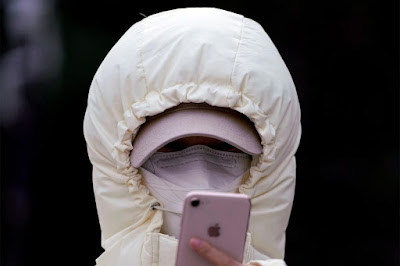
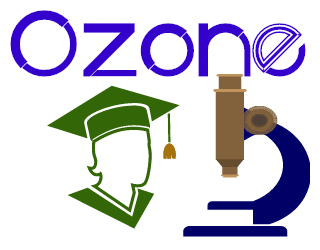
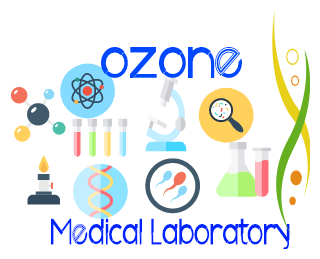
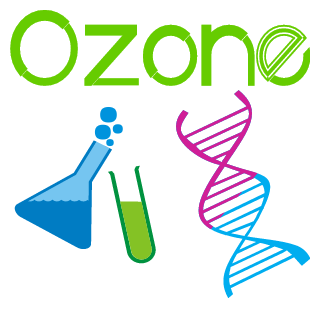
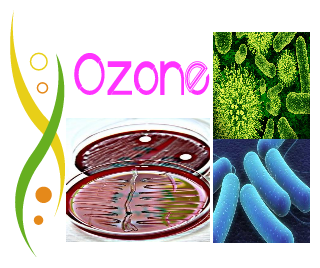
Comments
Post a Comment